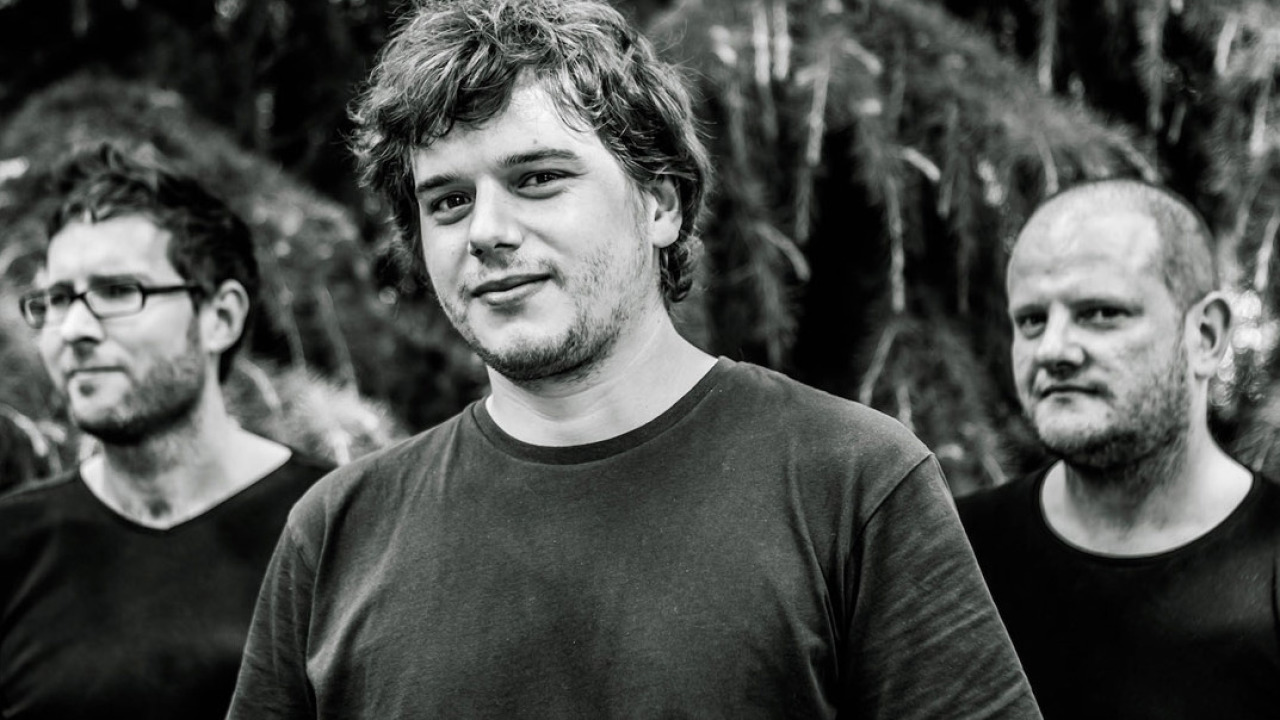North Atlantic Oscillation explain The Third Day
Vocalist Sam Healy offers track-by-track rundown on 4th album

North Atlantic Oscillation vocalist, guitarist and keyboardist Sam Healy has offered a track-by-track guide to their fourth album The Third Day.
The follow-up to 2012’s Fog Electric is out now via Kscope and can be heard in full below.
Great Plains II: “We discarded several tracks that were written early in the sessions. They had some interesting internal architecture but didn’t quite hang together. In keeping with the modular or atomic approach taken towards the album as a whole, we cannibalised the discards for spare parts. This track is built from some of them. That’s why it seems to start in medias res, and end in similarly ambiguous fashion.”
_Elsewhere: _“One long rejected track yielded some of Great Plains II and some of Elsewhere, which is why the keys conveniently match up. This was a tricky one to sing and a tricky one to mix. There were a good 20 or 30 draft mixes before it started to cohere. Some of the ‘ambient’ percussion is an old mantel clock with the weight removed so that it ticked faster and more erratically.”
_August: _“Some spurious time signatures smuggled into what is otherwise a fairly guileless dream-pop song. Too Many Organs was engineer Pete Meighan’s working title for it.”
A Nice Little Place: “Far fewer layers than is usual for us – just a string section, two woodwinds and one vocal. Third scale degrees are ruthlessly segregated: the verses are all minor, the choruses all major.”
Penrose: “Drummer Ben Martin had the idea to write a polyrhythmic pattern, then split it up into four separate parts and introduce them piecemeal. Since the track consists of four longish rounds repeated verbatim, this allows the percussion to build from a simple backbeat to a broadband cacophony. We just about got away with it.
Sign up below to get the latest from Prog, plus exclusive special offers, direct to your inbox!
Do Something Useful: “Probably the track with the most internal diversity of tone. It could only be placed here in the running order, after Penrose’s relative levity has insulated the listener against the impending grimy claustrophobia. But it’s all okay in the end. But then it’s not…”
Wires: ‘The most straightforward piece on the record. Gradually adding crenels and buttresses to a modest fort where we’d typically build a whole new castle. The lyrical content had been floating around for years; it was satisfying to finally staple it to a song.”
Pines of Eden: “The background textures are field recordings made several years apart. There are footsteps in an old railway tunnel, an express train, and a faulty strip light in a university corridor. The only song that was quiet enough to record at home in the middle of the night.”
Dust: “The most difficult track to record and mix. The session file became so large that it just wouldn’t play. We had to split it up into its constituent movements and mix them separately, stitching them together at the end and hoping the transitions wouldn’t sound too jarring, or not jarring enough. It features five different synth basses, over 40 vocal lines and three acoustic drumkits, not counting the electronic and live percussion, melodic synths, pads, piano, guitars, mallets and effects.”
When to Stop: “A simple song, partly inspired by a sad scene in an old film. Partings, especially ones instigating a long or eternal absence, have this strange bittersweet paradox in them. They’re both delicate and violent, heavy and light, loud and quiet.”
The trio tour in support of the release later this month.
Tour dates
Oct 21: Newcastle Star & Shadow Cinema
Oct 22: London Hoxton Bar & Kitchen
Oct 23: Manchester Soup Kitchen
Oct 24: Birmingham Oobleck
Not only is one-time online news editor Martin an established rock journalist and drummer, but he’s also penned several books on music history, including SAHB Story: The Tale of the Sensational Alex Harvey Band, a band he once managed, and the best-selling Apollo Memories about the history of the legendary and infamous Glasgow Apollo. Martin has written for Classic Rock and Prog and at one time had written more articles for Louder than anyone else (we think he's second now). He’s appeared on TV and when not delving intro all things music, can be found travelling along the UK’s vast canal network.
